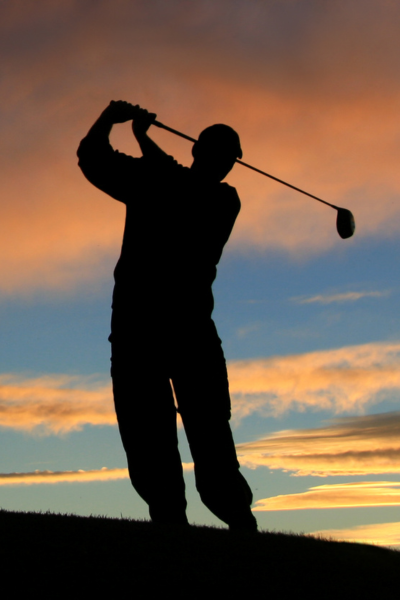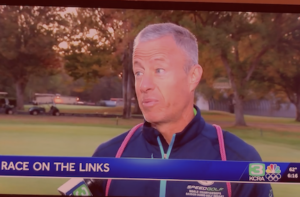A friend sent me a TikTok video recently of a lacrosse player ranting about the importance of hard work. Put up 100 shots every single day and never miss a single day no matter what, you will get a college scholarship….Now this may be an OK message to convey to some earnest novice high school athletes, especially because of the distracting and addictive nature of video games and phones. Yeah, put that crap down and go sling 100 shots! However, I strongly disagree with the premise that volume equals success, and this ideal has been firmly disproven with emerging science. That’s right, the widely touted “10,000-hour rule” that has entered cultural lexicon as the sure path to excellence, has been misinterpreted and misappropriated. In summary, it’s a lotta bullshit.
Reference David Epstein’s book The Sports Gene or Daniel Coyle’s book The Talent Code where they talk about the concept of “deliberate practice.” You have to be precise and you have to introduce what my Speedgolf mentor Christopher Smith calls, “context specificity.” This means putting yourself under competitive circumstances during practice, instead of just mindlessly getting to a repetition number. Cranking out 100 shots a day will get you past the pretenders, but it’s not the path to mastery. Similarly, never taking a day off can harbor an unhealthy, obsessive mindset, physical exhaustion, and overuse injury (which are predominant in competitive youth sports today) and lead to emotional and mental health problems–especially in young, impressionable athletes.
Furthermore, brain research, including functional MRI testing that Smith references with golfers, reveals that the brain needs time to rest so it can absorb and wire the desired technique attributes into the myelin sheath that surrounds the muscle tissue. Ben Hogan, lauded as the most diligent practicer of all time, took a break for a cigarette every 20 minutes of his many hours on the golf range, which conveniently aligns with the emerging brain science. Relatedly, Smith argues convincingly that there is no such thing as “muscle memory”—muscles have no memory. If you skimp on sleep, watch what happens with the destruction of your “muscle memory.”
It’s only the central nervous system and getting the wiring right through very precise, intense practice, guided by a mentor for technique precision, followed by rest, and also the pursuit of disparate hobbies and interests so that the athlete becomes well rounded and well balanced. Anyone who tells a talented high school distance runner dreaming of a college opportunity in a highly competitive environment to “never miss a day”, whether parent or coach, should be fired. “Hey dad, sorry but I’m letting you go.” I assure you that for a talented athlete, rest and balance will be the key variables they need to thrive and develop in high school, college, and beyond.
There are whole documentaries about the overpressurized sports experience with high cost and high pressure elite travel teams. Best-selling author John Delony, known for his books and talks about the importance of owning your past so you can change your future and the merits of building a non-anxious life, has stated that these travel teams destroy families. Why? Because of all the misallocated time, money, and energy. Where is the time for a family vacation, or even just a family dinner at home? Parents understandably feel the pressure to keep up, but to what end?
Furthermore, it’s helpful to maintain a realistic perspective and remember that talent always finds its way to the top. My sister, Dr. Kathleen Kearns, was valedictorian of an Ivy League university, further distinguished from her brothers’ academic records. I saw the journey first hand and I assure you that no one pushed her, forced her, incentivized her, or lingered over her shoulder as she pursued her natural destiny. No after-school Kumon math class nor heavily parent-influenced science fair projects along the way.
Wayne Gretzky had a famous quip to a parent of a young hockey player who approached him and asked: “Any ideas how I can get my kid to practice more?” To which The Great One replied, “No one ever had to tell me to practice.” If a kid wants an opportunity to play NCAA college basketball, it’s not gonna be about firing up 100 shots a day. Instead, the elite ballers display the passion and courage to immerse themselves in intense practice, expert coaching, and high pressure competitive experiences. Of course genetics plays a huge role, but one’s environment has to be supportive instead of pressurized to avail one’s natural potential.
I can hear the counter opinion now, “But Steph Curry puts up 500 shots every day!”. Yes, he does—examine his videos and you’ll see that he simulates game circumstances and is completely mindful at all times; witness his legendary pregame warm-up routine that early arriving fans can marvel at. Furthermore, he’s Steph Curry!
The TikTok video to young lacrosse players reminds me of many more posturing videos from successful people telling you to grind and grind, outwork the competition, be relentless, and other over the top stuff. It makes me think of Kobe Byrant. Rest in peace, Kobe, whom I loved and cried when he left us. However, he too was also guilty of posturing and embellishing, possibly to magnify his aura and intimidate his opponents. Some of his most popular videos are the ones where he’s “explaining” why he has an advantage—he says it’s because he’s up at 4am, but if someone copies him, “Then I wake up at 3am.”
Tiger Woods can also be found on videos describing how he used to practice all day long: He details running 4 miles in the morning, then breakfast, then the range, then the gym, then lunch, then more on the course, then running another four miles. Bullshit on the 8 miles a day, sorry Tiger. Interestingly, in the unauthorized biography The Big Miss: My Years Coaching Tiger Woods, Hank Haney reveals that while Tiger really did work harder than other players, but not to the level he reported. Why embellish anything when you are already the GOAT? Is it about feeding a massive ego? Or intimidating your opponents? I’ve said enough already, but the bottom line is that this type of blather can send a harmful message, especially to young, impressionable athletes who look up to heroic athletes.
Malcolm Gladwell popularized the “10,000-hour rule” (attributed to Swedish psychologist K. Anders Ericsson) in his book Outliers, but this idea has actually been grossly misinterpreted. There is no sure path to excellence through pure volume. Ericsson himself confirms this! But Gladwell is a storyteller, not a scientist. He found an idea, embellished it, and took away the science. What remained was the romanticized notion that if you go crazy with your practice hours and don’t stop believing, working, and working some more, then you will attain mastery. The 10,000-hour rule was also disproven in real life by a clever journalist in Portland who chronicled his 10,000 hour quest to go from an average golfer to professional competitor. He put in 6,000 hours before he had to abandon the project. Predictably, he went from a mediocre player to shooting in the 70s on his average neighborhood public course, but nowhere near tournament professional caliber.
If you’ve read The Sports Gene, you are familiar with the tale of two high jumpers, Donald Thomas and Stefan Holm. Holm, a high jumper with over 20 years of practice behind him, got beat by Donald Thomas—a man who only had eight months of high jump practice under his belt at the time he was crowned world champion in 2007. On Thomas’ first-ever exposure to the event, he cleared 6’8”. Clearly, you cannot 10,000-hour your way to excellence, but you can do so straight to burnout.










